Published on: January 31, 2023
To better understand horses and the challenges they face, it is important to learn about the dangerous predators that threaten their safety. By doing so, we can approach training and handling with empathy and respect, setting the foundation for a successful partnership.
In this article, I share the top 5 predators of wild horses and explore how they stalk, hunt, and kill their prey. From the lion’s stealthy ambush to the wolf’s pack mentality, I uncover the secrets of these powerful predators. Join me on a journey to discover the top predators of wild horses.
Mountain Lions and Cougars
Mountain lions and cougars are the same animal, also known as pumas or panthers. They are large carnivorous cats that are found throughout North and South America. They are apex predators known to prey on animals, including deer, elk, and wild horses.
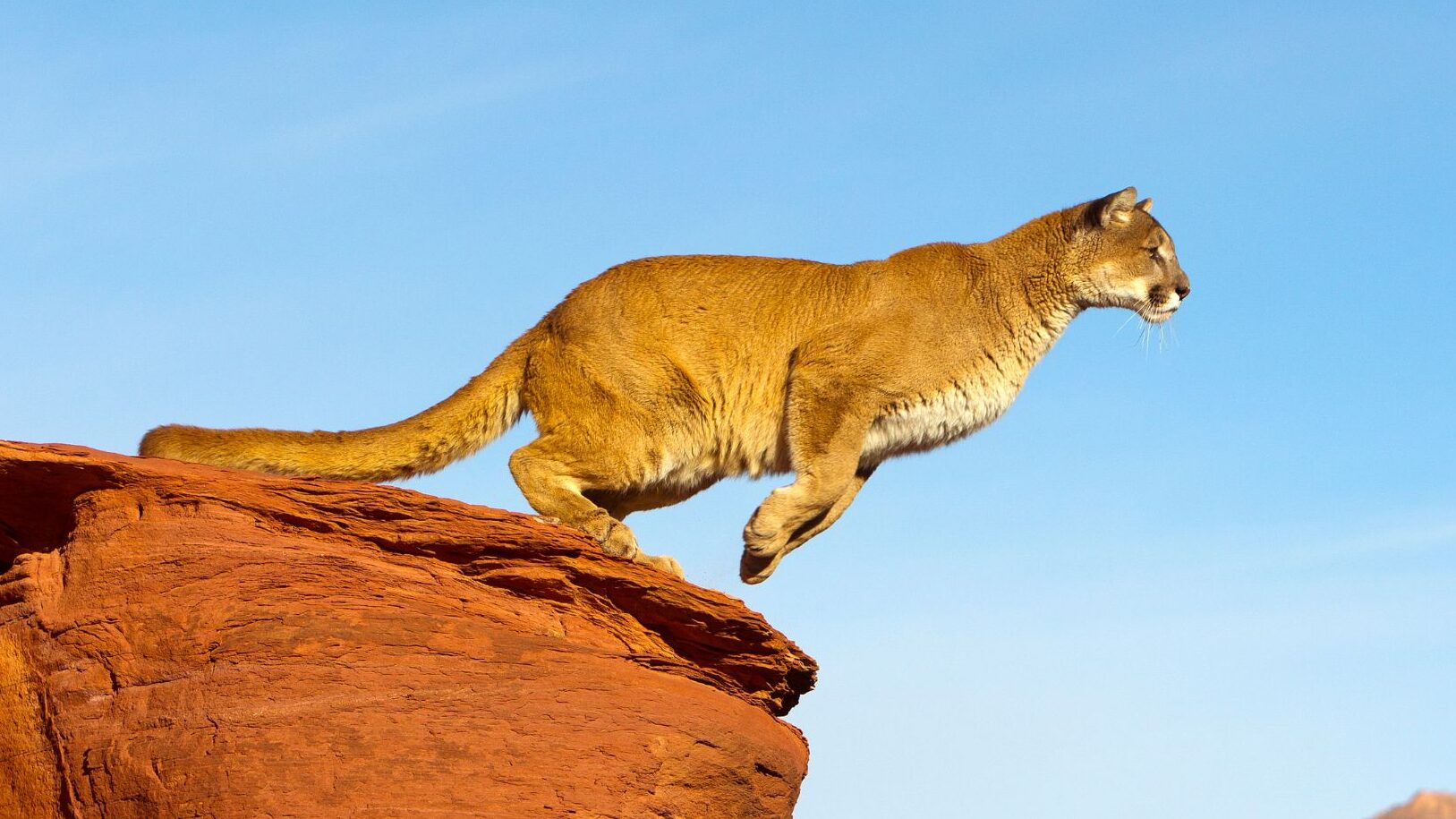
However, attacks are rare and typically occur when the mountain lion is starving or the wild horse is sick or injured. Most mountain lion attacks on wild horses occur in western states, including parts of California, Nevada, Arizona, Utah, Colorado, and New Mexico.
They are very stealthy, and their ambush-hunting strategy makes them a significant threat to wild and domestic horses. Mountain lions can pose a danger to domestic horses, especially if they are kept in areas where mountain lions are known to live.
One reason horses get nervous when something is placed on their back is due to their survival instincts from mountain lions. In the wild, mountain lions jump on a horse’s back, causing the horse to bolt in defense instinctively.
To prevent this nervous reaction, horse owners must build trust with their horses to allow them to overcome their survival instincts and calmly accept objects on their backs.
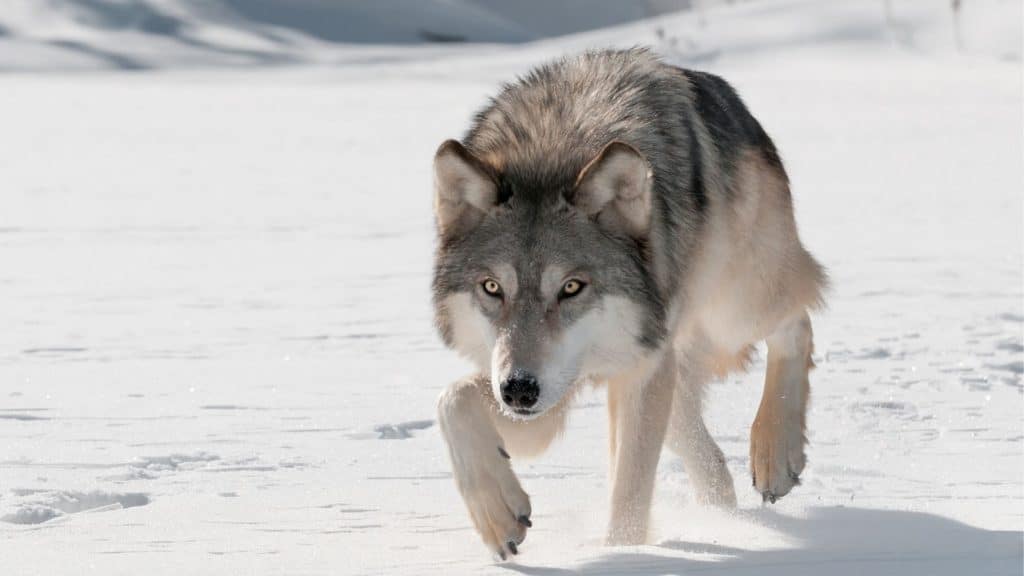
Wolves
Next up, we have wolves! Wolves can be dangerous to wild horses, although they are not a major predator of them. Wolves typically prey on smaller animals, such as deer and elk, but they may occasionally target wild horses if other food sources are scarce.
They are pack hunters who can bite and injure a horse during a hunting attempt, although it is not a common practice. Wolves may attack wild horses if weak, sick, or young, but they are not typically a threat to healthy adult horses.
Wild horses can defend themselves using their speed and agility to outrun wolves and kicking and biting. They also have the advantage of being in large herds, which can deter wolves from attacking, as the pack hunters prefer to target isolated animals.
To protect wild horses from wolves, it is essential to maintain healthy populations of wild horses. And also to manage and protect the habitat they live in. This includes protecting and preserving natural landscapes, preventing overhunting of other prey species, and controlling human activities that can disrupt the ecosystem.
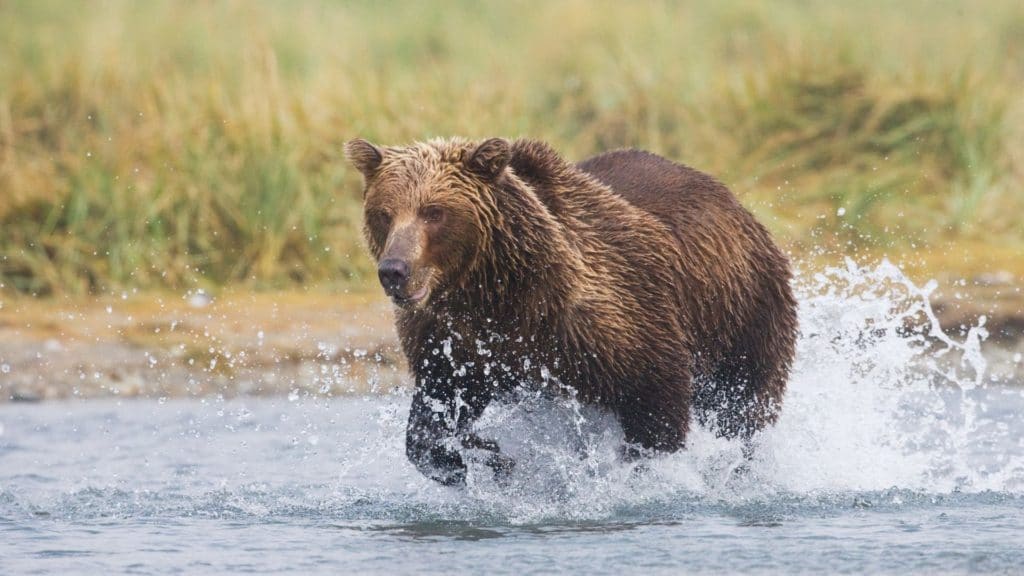
Bears
Bears, like wolves, are not significant animal predators of wild horses, but they can be dangerous to them. They are opportunistic hunters and can prey on weak, sick, or young wild horses.
When bears attack horses, they usually target vulnerable areas such as the neck, face, and eyes. They also have the power to crush the horse’s skull with a single bite. This is a powerful and deadly predator
capable of taking down even the strongest of horses.
Bears are found in many different habitats, from the dense forests of North America to the rugged mountains of Europe and Asia. They can be found in grasslands, deserts, and tundra. Likewise, wild horses can come across bears in many different environments, from dense forests to open grasslands.
There is a spiritual contrast between wild horses and bears; for example, wild horses symbolize grace and determination, and bears embody the raw strength of nature.
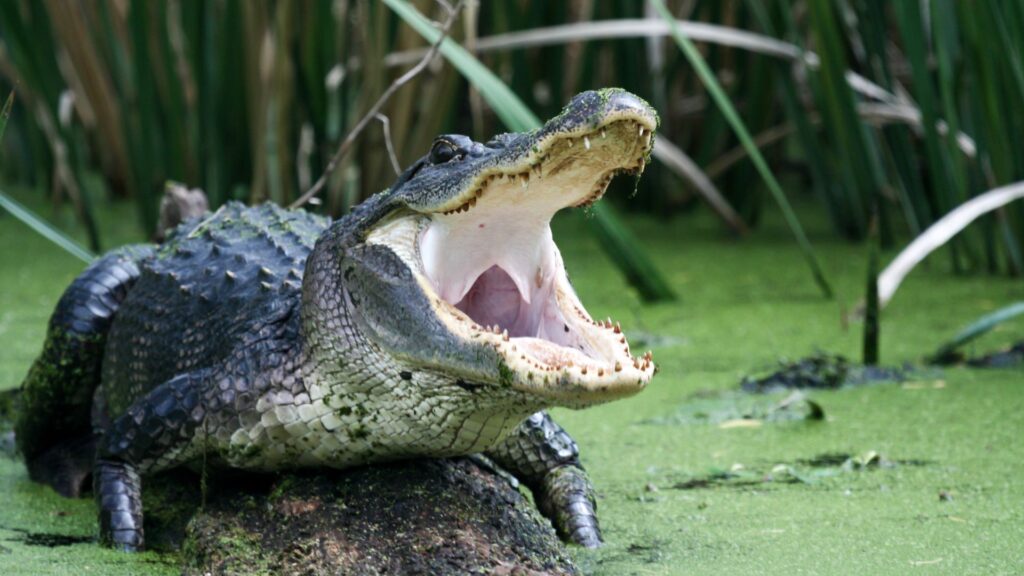
Alligators
Yes, alligators can pose a danger to horses in certain habitats. Alligators are found in freshwater habitats, such as swamps, marshes, and rivers in the southeastern United States. If a horse is grazing or drinking near the water’s edge, an alligator may see it as a potential meal.
While alligator attacks on horses are relatively rare, they can still pose a threat. Horse owners need to be cautious and aware of the alligator populations in their area.
I live in south Louisiana, and large alligators are common, and when they attack, it can be a gruesome and terrifying sight. When they lock onto an animal or human, they try to drag it to the water.
Keep horses away from bodies of water where alligators are known to live, and being aware of the signs of alligator activity is crucial. It’s also essential to respect alligators and their habitat and not to feed them or interfere with their natural behaviors.
Boars
So, you might be wondering about wild pigs and how they fit into the wild horse predator picture. Well, here’s the deal – wild pigs, or boars, aren’t usually seen as a significant threat to wild horses.
They’re omnivores, so they’ll eat a mix of plants and small animals. But, if food is hard to come by, boars might attack wild horses, especially if the horses are weak, sick, or young. And when they attack, they’ll go
for vulnerable spots like the horse’s back end or stomach, using their sharp tusks to cause severe injuries.
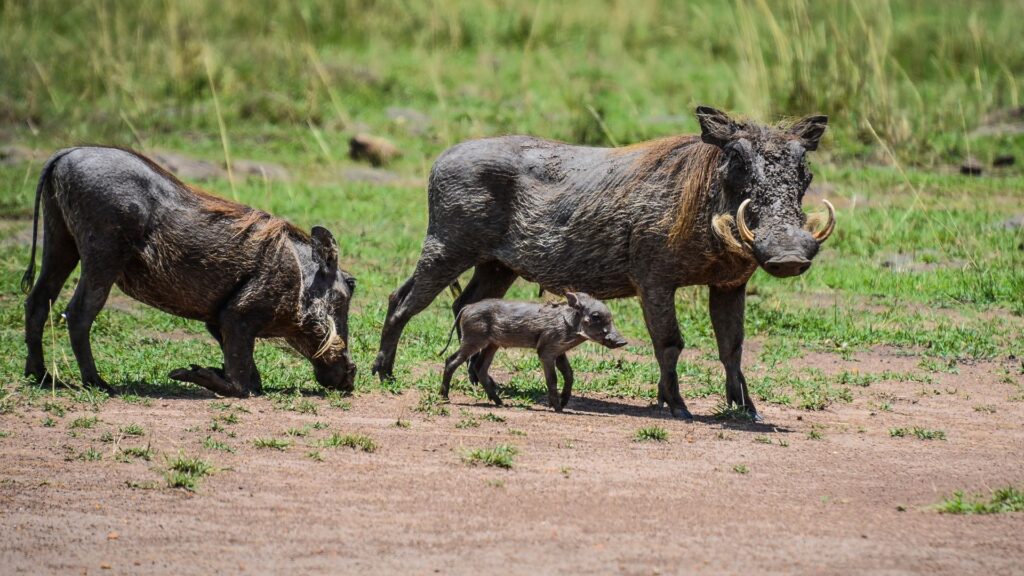
They can also plow into the horse with their big head and body. But don’t worry; wild horses have a few tricks. They can use their speed and agility to get away from boars and defend themselves by biting and
kicking.
Wild horses usually travel in big groups, which can keep boars at bay because they prefer to go after solo animals. Let’s say a herd of wild horses is out on the grassland, and they, come across a boar.
The horses will quickly spot the boar and start moving away from it. Sensing the horses know it’s there, the boar will retreat into the forest. The horses will go back to grazing and moving around the grassland,
keeping an eye out but not too worried about the boar.
Natural Survival Traits of horses
Horses possess natural survival traits that have enabled them to thrive in the wild for thousands of years. From their flight instinct to their strong memory, these traits have helped horses navigate dangerous situations and survive in their natural habitats.
Flight instinct
The flight instinct refers to a horse’s natural tendency to flee from perceived danger or threatening situations. This instinct is a survival mechanism that has evolved to protect horses from predators and other dangers in the wild.
When a horse senses a potential threat, it will instinctively respond by running away to escape danger. The flight instinct is a powerful force in horses and can be triggered by various stimuli, including loud noises, sudden movements, or unfamiliar objects.
The strength of a horse’s flight instinct can vary from individual to individual, but it is a crucial survival trait that helps horses protect themselves from danger.
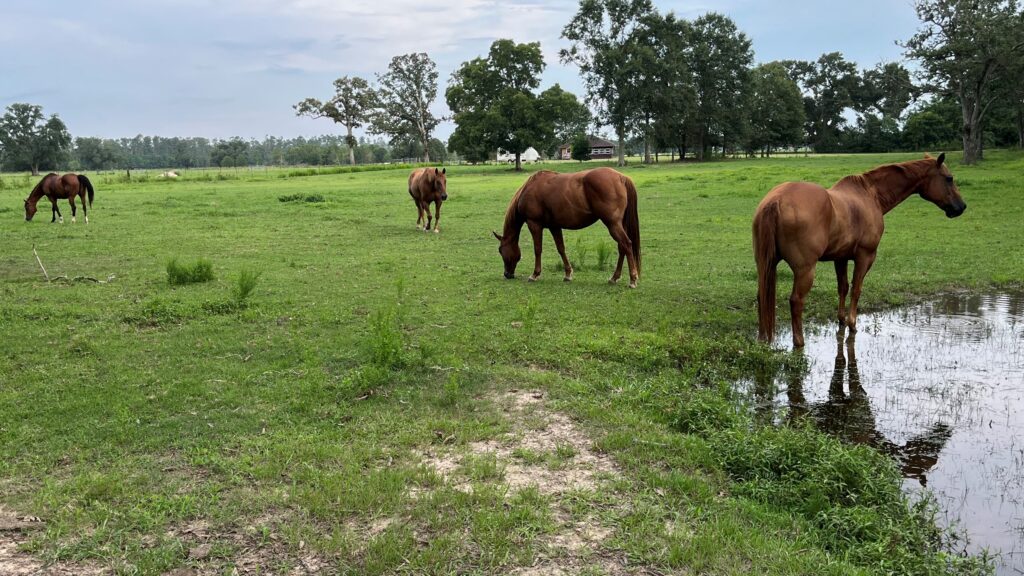
Social behavior
Horses are naturally social animals and tend to form strong bonds with other horses, forming herds. When horses live in a herd, they can increase their chances of survival by sharing resources and supporting each other.
For example, when a predator is nearby, the horses can work together to scare it off, or one horse may act as a lookout while others graze. The presence of other horses can also make a horse feel safer and more secure, reducing its stress levels and allowing it to be more alert to potential dangers.
Additionally, social bonds between horses can facilitate cooperation and communication, increasing the herd’s overall efficiency and success. Overall, social behavior plays a critical role in the survival of horses in the wild.
Sight and hearing
Horses have two critical sensory abilities – sight and hearing – to help protect themselves against predators. Their keen eyesight allows them to detect potential threats from far away, giving them ample time to react and escape.
Their eyes are positioned on the sides of their head, giving them a wide field of vision, so they can scan their surroundings and stay vigilant. When a horse senses a predator, it can respond quickly by fleeing or gathering with other horses for protection.
In addition to their vision, horses have acute hearing that helps them detect sounds from far away. This allows them to pick up on any potential threats, such as the approach of a predator or the sounds of other animals in distress.
With their sensitive hearing, horses can respond to danger even when it’s not in their line of sight, providing an extra layer of protection against predators.
In summary, a horse’s ability to see and hear predators helps it to stay alert and respond quickly to potential threats, providing crucial protection against predators in the wild.
Speed, agility, and endurance
Horses’ speed and agility allow them to quickly escape danger, outrunning predators that pose a threat. Horses can reach incredible speeds, making it difficult for predators to catch them once they are on the run.
Their endurance, on the other hand, enables them to sustain a fast pace for longer periods, making it even harder for predators to keep up. In addition to using their speed to escape danger, horses can also use their agility to evade predators.
Horses can make sudden changes in direction, making it difficult for predators to catch them. They can also jump over obstacles, such as fences or streams, to escape danger, making it even more challenging for predators to catch them.
Strong memory
Horses have an excellent memory for locations and events, allowing them to recall where they have encountered danger in the past. By remembering these locations, horses can avoid returning to areas where they are likely to encounter predators and instead choose safer routes.
For example, if a horse encounters a predator while grazing in a particular area, it will remember the location and avoid that area in the future. This can help the horse to stay safe and reduce its chances of becoming prey.
In addition to remembering locations, horses also have a good memory for social dynamics. They can remember which horses in their herd are dominant and submissive, and they use this information to form alliances and work together to evade predators.
This social memory allows horses to work together and use their collective strength to stay safe, further enhancing their chances of survival in the wild.
Communication
Horses use a variety of signals to communicate with each other and survive in the wild. These signals help horses to coordinate their actions and work together to evade predators, find food, and establish social hierarchies. Some of the key signals used by horses include:
- Sound: Horses use vocal sounds to communicate over long distances. Whinnying can be used to call for help, warn of danger, or locate other horses.
- Ears: Horses use their ears to communicate their mood and intentions. A horse that is alert and focused will point its ears forward. When it is relaxed or friendly, it will position its ears back. When it is frightened or aggressive, it will lay its ears flat against its head.
- Body posture: Horses use their body posture to communicate their dominance and submission within the herd. A dominant horse will stand tall and assertive, while a submissive horse will appear more relaxed and lower its head.
- Tail position: Horses use their tail position to communicate their emotional state. When a horse is happy or relaxed, it will carry its tail high, while when it is frightened or nervous, it will tuck its tail between its legs.
- Facial expressions: Horses use their facial expressions to communicate their emotional state. They can raise their eyebrows, show their teeth, or flare their nostrils to express their mood.
By using these and other signals, horses can communicate with each other and work together to survive in the wild. Whether they are avoiding predators, finding food, or establishing social hierarchies, these signals help horses to coordinate their actions and ensure their survival.
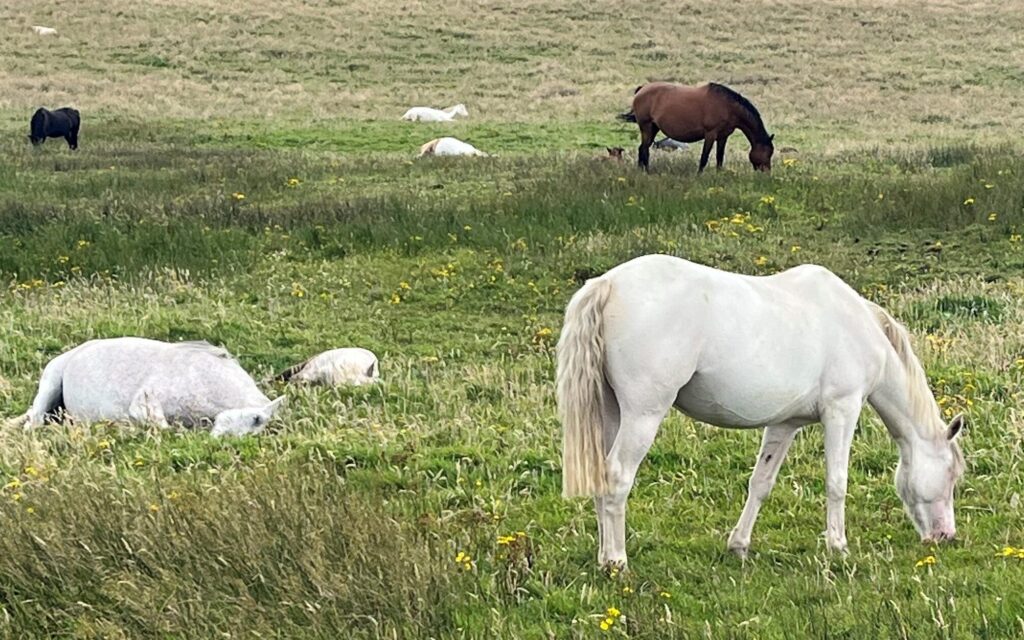
Conclusion
In conclusion, horses are remarkable animals with evolved survival traits to help them evade predators and thrive in their environment. From their keen senses and strong memories to their social behavior and use of signals, horses possess a range of abilities that help them to stay safe and survive in the wild.
As horse enthusiasts, it is essential to understand and respect these instincts, as they play a critical role in shaping the behavior and personality of horses. Whether training young horses, working with horses, or simply observing their behavior, we must consider these instincts and allow horses to express their natural behaviors.
By learning about the top predators of wild horses, the critical role of their instincts, and how they use these instincts to survive, we can deepen our understanding of these magnificent animals and appreciate the many challenges they face in the wild.

About the Author: Miles Henry
Lifelong Horseman | Racehorse Owner | Published Author
Miles Henry brings over 25 years of hands-on experience training and owning Thoroughbred racehorses. Raised with Quarter Horses and Appaloosas, he’s spent a lifetime learning from horses—on the track, in the barn, and in the field. Today, he runs a small but successful racing stable in Louisiana and shares real-world insights on HorseRacingSense.com, helping horse owners, fans, and bettors navigate the sport with confidence.
📚 Books: View Miles’s books on Amazon »
🎧 Podcast Guest: Animal Tales Ep. 32 |
YouTube Interview
📩 Newsletter: Sign up for racing tips and horse care advice »
🔗 Follow Miles:
Twitter |
Facebook |
YouTube

